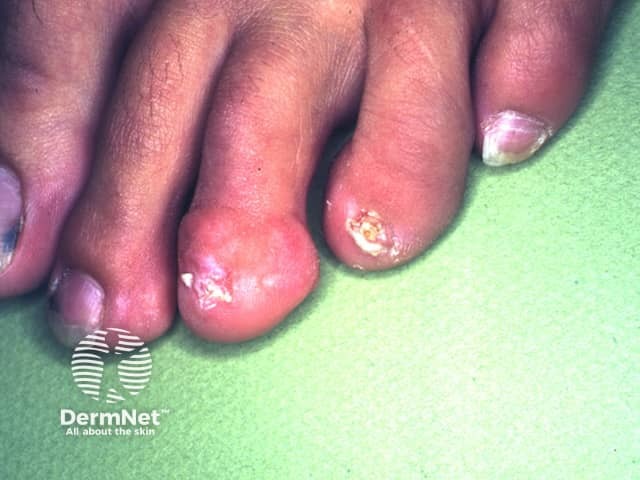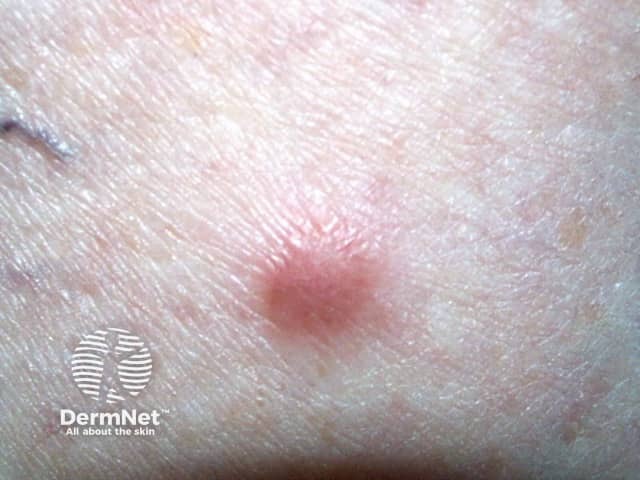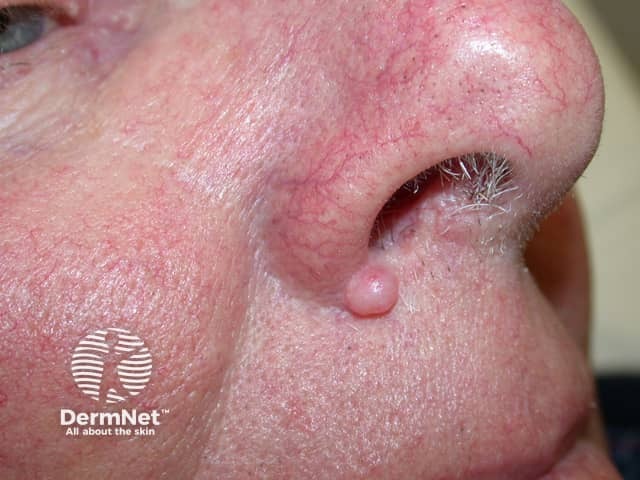Main menu
Common skin conditions

NEWS
Join DermNet PRO
Read more
Quick links
Fibromatosis — extra information
What is fibromatosis?
Fibromatosis is a condition where fibrous overgrowths of dermal and subcutaneous connective tissue develop tumours called fibromas. These fibromas are usually benign (non-cancerous).
What is the classification of fibromatosis?
There appear to be many different ways to classify fibromatosis. One classification system used is based on age (i.e.: juvenile vs adult fibromatoses) and localisation (ie, superficial vs deep fibromatoses).
Juvenile |
Adult |
|---|---|
|
Superficial (fascial) fibromatoses
Deep (musculoaponeurotic) fibromatoses
|
See also elastofibroma pathology.
What are the features of fibromatosis?
The following table lists the distinguishing features between superficial and deep fibromatoses.
Superficial fibromatoses |
Deep fibromatoses |
|---|---|
|
|
Whilst most fibromatoses are benign tumours and do not metastasise (spread to other parts of the body), the desmoid tumours although they do not metastasise like malignant cancers can be locally aggressive. They can grow quickly into large tumours that can obstruct vital structures such as major blood vessels, nerves and organs.

Infantile digital fibroma

Knuckle pads

Dermatofibroma

Fibrous papule

Periungual fibroma
What causes fibromatosis?
The cause of fibromatosis remains unclear. In some types of fibromatosis such as desmoid tumours, it is thought that the condition may be related to trauma, hormonal factors, or have a genetic association. Superficial fibromatoses such as palmar, plantar and penile fibromatosis have sometimes been linked to certain diseases such as diabetes, liver disease and hypertension.
What is the treatment for fibromatosis?
Management of fibromatosis depends on individual disease. For further information on the different types of fibromatoses select from the list below.
- Congenital generalised fibromatosis (infantile myofibromatosis)
- Aponeurotic fibroma
- Infantile digital fibromatosis
- Aggressive infantile fibromatosis
- Fibromatosis colli
- Dermatofibrosis lenticularis (Buschke-Ollendorf syndrome)
- Palmar (Dupuytren disease) and plantar (Ledderhose disease) fibromatosis
- Penile fibromatosis (Peyronie disease)
- Knuckle pads
- Pachydermodactyly
- Dermatofibroma
- Nodular fasciitis
- Elastofibroma
- Fibrous papule of the nose or face
- Desmoid tumours (aggressive fibromatoses)
References
- Book: Textbook of Dermatology. Ed Rook A, Wilkinson DS, Ebling FJB, Champion RH, Burton JL. Fourth edition. Blackwell Scientific Publications.
